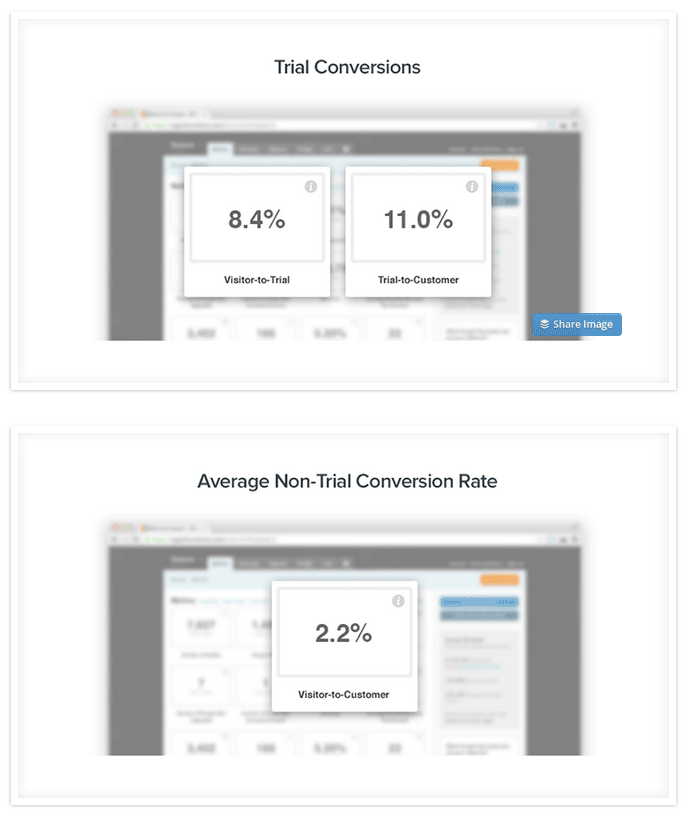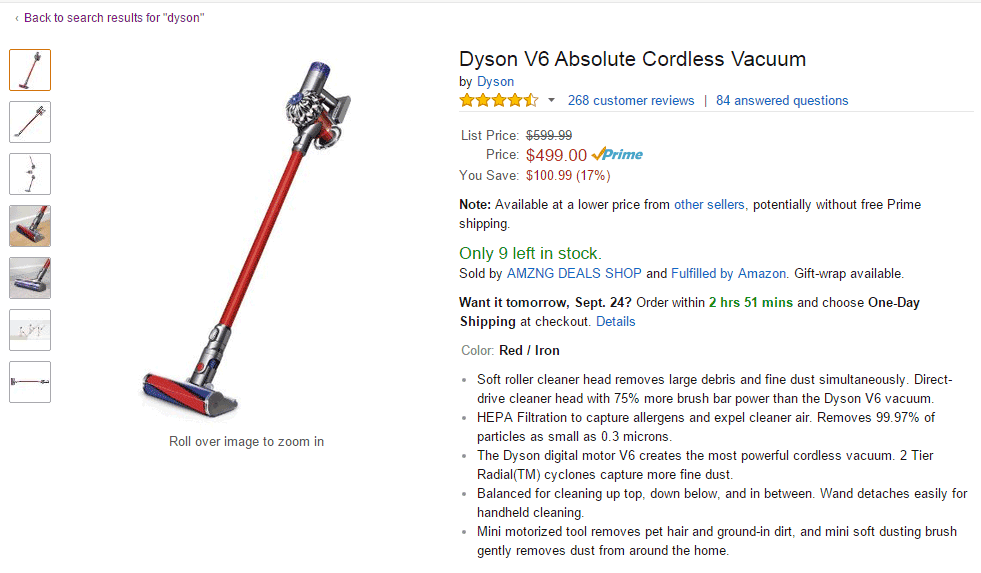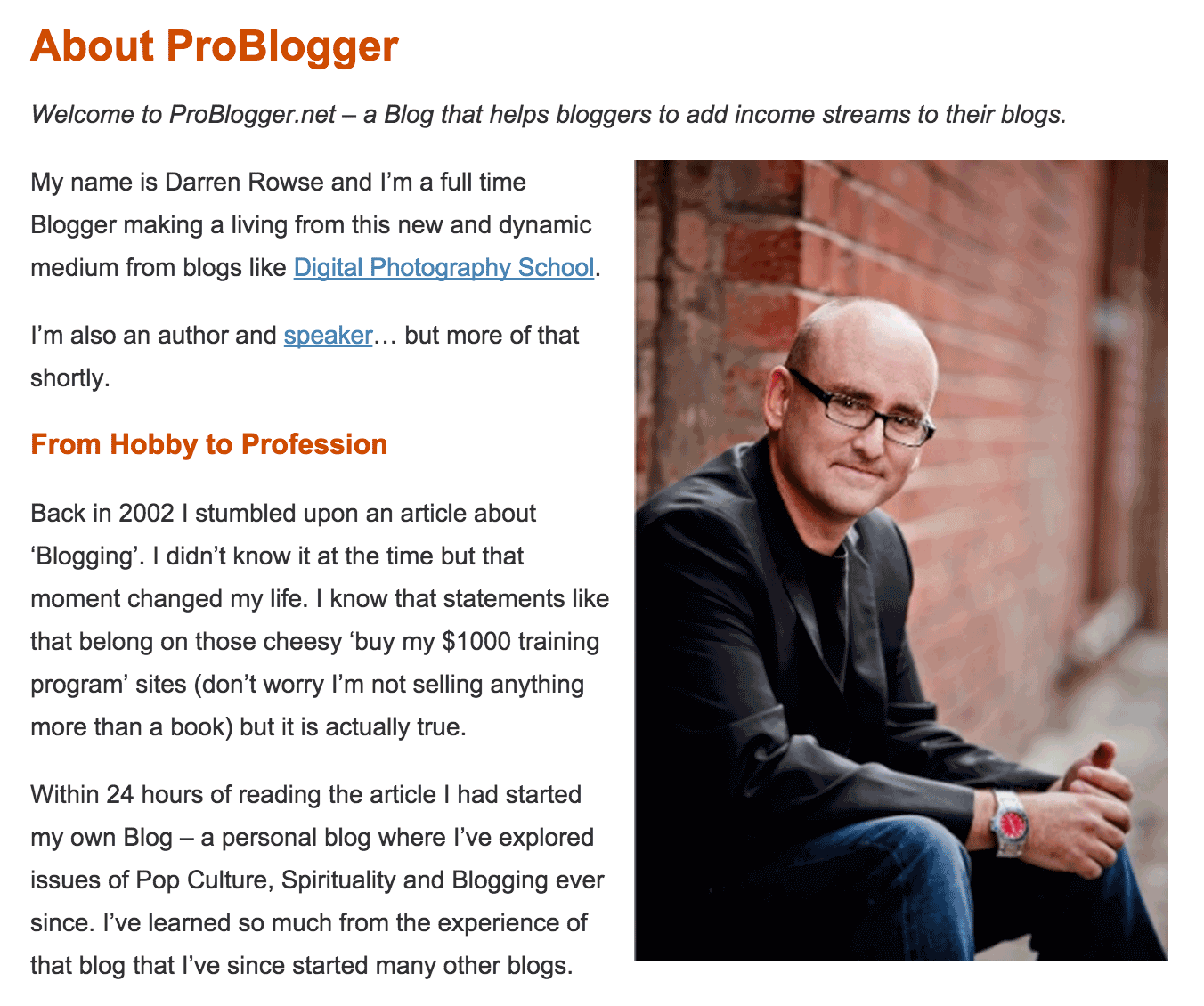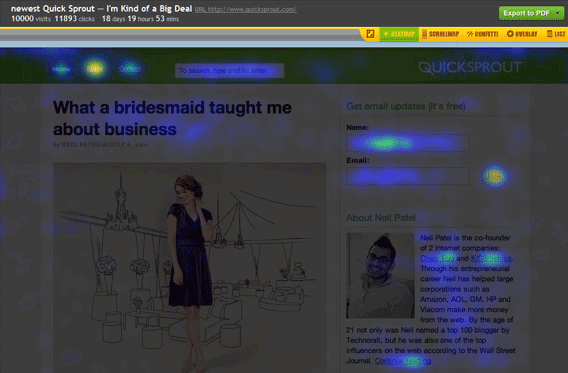The world of online selling is drowning in data.
From analytics dashboards to visualizations tools to A/B testing suites to automated marketing solutions, just keeping your head above the big-data waters can be overwhelming.
Sadly, even with this flood of computer generated insights, 95.8% of the world’s internet still does “nothing” when they visit a site.
So, what’s missing?
Psychology.
As Neil Patel put it in The Complete Guide to Understand Customer Psychology:
“Online marketers are obsessed with traffic acquisition numbers and conversion rates. It’s easy to forget that your consumers are real people on the other side of the computer screen.”
And the key to reaching these “real people” is triggering what persuasion expert Robert Cialdini in his book Influence: Science and Practice calls “judgmental heuristics.” Heuristics are “mental shortcuts” that allow you take advantage of humanity’s love of “simplified thinking.” Cialdini himself identified six “weapons of influence,” which is exactly why the first six triggers on this list follow his own.
However, to make this as actionable as possible, I’ve added not just best-practice tips, but plenty of real online examples to back them up. Even better, I’ve also included an additional trigger tailored especially for those of you who love data.
- Reciprocity
- Scarcity
- Consistency and Commitment
- Authority
- Liking
- Clustering
- Social Proof
1. Reciprocity
Reciprocity is powerful and deeply ingrained psychological trigger. Actually, it’s inescapable.
The principle is simple: when you receive, you’re more likely to give.
To be clear: this isn’t just fanciful karma. As Cialdini explains, “One of the most widespread and basic norms of human culture is embodied in the rule for reciprocation. The rule requires that one person try to repay, in kind, what another person has provided.”
Brick-and-mortar retailers have been relying on reciprocity for hundreds of years. In fact, we’ve all experienced this trigger first hand … especially if you’ve ever been to Costco. As The Atlantic pointed out, offering “beer samples at many national retailers on average boosted sales by 71 percent.”
So how do you trigger reciprocity online?
The most obvious way is through what are often called “lead magnets” or “carrot content offers.” By offering your audience a free but genuinely valuable email series, online course, webinar, whitepaper, checklist, or special report they are far more likely to take the next step in the sales process when it’s presented. QuickSprout’s “Free Course” serves as their primary CTA:
If you provide a SaaS product, however, then the real key is honing a “freemium” model. Dropbox is perhaps the most famous example of this tactic. From 50 million users in 2010, Dropbox has grown to well over 300 million by giving new users 2GB of free space and then offering paid plans that start at $9.99/month.
In 2011, it was reported that only 4% of Dropbox users were paid subscribers, which can sound small, but that percentage translates into upwards of $1.18 billion dollars in annual revenue.
Image Credit: Dropbox
While Dropbox is clearly a breakout success, this principle holds true across other companies in the SaaS industry. As Groove discovered in their 2013 SaaS Small Business Conversion Survey, the conversion rate of visitor to trial to customer far outpaced the alternative of visitor straight to customer.
Image Credit: Groove
2. Scarcity
The harder it is to get something — that is, the scarcer a resource appears or the more urgent its appeal — the more we want it. In a nutshell, that’s scarcity.
In academic terms, scarcity is, “the fundamental economic problem of having seemingly unlimited human wants in a world of limited resources. It states that society has insufficient productive resources to fulfill all human wants and needs.”
What drives scarcity is fear. More to the point, as humans we’re far more motivated by the fear of losing than we are by the desire of gaining. With at least 56% of us experiencing active FOMO, this trigger drives consumer behavior and is even responsible for our borderline addictive love for social media.
The best example of just how powerful scarcity truly is the deeply ironic relationship between gun control and gun sales in the US. As USA Today reported in early September of this year, “Renewed calls for more restrictive gun laws, following a succession of fatal shootings in the United States, immediately appear to be generating a boost for the gun industry.”
Why?
Because we want what we can’t have.
The tricky thing is … how can you create scarcity without waiting for the hand of fate to swing your way?
Take Chanel for instance. Simply by producing a limited amount of seasonal colors of it’s infamously expensive nail polish, the make-up provider drives sales season after season. Infomercial giant QVC, hotel and airfare sites like Expedia, and even Amazon all employ scarcity similarly by displaying quantity countdowns — “Only 9 left in stock” — and time constraints — “Want it tomorrow, Sept. 24? Order within 2 hrs 50 mins and choose One-Day Shipping at checkout.”
Image Credit: Amazon
Free trials, in addition to generating reciprocity, also play on loss aversion and therefore scarcity. As mentioned above, offering a free trial allows customers to see and experience the product or service firsthand. When they become attached to it, they’re more likely to pay for the use of the product or service at the end of the trial, because they don’t want to lose what they’ve already gained.
The easiest and most powerful form of scarcity online, however, comes in the form of what Content Marketing Institute recently called “painful buttons.” Painful buttons are essentially opt-out or “close window” copy that appear on pop-ups. While most “No” buttons are passive, painful buttons drive home the consequences of not converting.
Joanna Wiebe, for example, was able to move her daily, Copyhacker’s email signups from the double digits to the “triple digits” with the addition of this pop-up:
Image Credit: Copyhackers
CrazyEgg employs the same approach:
KlientBoost, on the other hand, which goes right for the FOMO jugular:
Image Credit: KlientBoost
3. Consistency and Commitment
Consistency and commitment operates on two levels.
First, the best predictor of future behavior is past behavior. People, for both interpersonal-social reasons and personal-subconscious reasons, will go to great lengths to appear consistent with their previous thoughts and actions. This is exactly why making major changes in lifestyle, such as losing weight or quitting smoking, are far more successful once the goal has been publicly announced.
Second, small yeses always precede big yesses. Put another way, as anyone who’s been in face-to-face sales knows: the first “yes” is hard; the second, easy.
The key is to make commitment a bite-sized act. When it comes to small yeses, a tiny action can produce huge changes. Conversion Voodoo increased application conversion rates by more than 11% simply by adding a commitment checkbox:
Image Credit: Conversion Voodoo
Mini-commitments help people to be more likely to follow through with the application process that can take much longer than the checkbox. The easy yes turns into the hard commitment.
This same principle is behind two-step opt in forms like those created by LeadPages. Not to be confused with double-opt-in emails themselves — which require new subscribers to click “Confirm” once they’ve signed up — two-step opt-in forms break the actual process of signing up into two (or more) separate steps.
LeadPages used this approach on their own blog and landing pages which resulted in a 60% increase in opt-ins. Here’s the CTA for their product tutorial:
Image Credit: LeadPages
Then, instead of putting the entire form within the CTA itself, a pop up appears as the next step:
Image Credit: LeadPages
Retargeting is another phenomenal application of consistency and commitment. Retargeting works through cookie or pixel-based tracking that allows you to “follow” your audience and represent offers based on visits to a specific page on your website.
There are at least two huge stats to remember here. First, 70% of users will start a purchase on one device and finish on another. Second, retargeted ads can boost response rates up to 400% compared to cold ads.
4. Authority
Authority is one of the scarier psychological triggers.
Where social proof, which is covered below, relies on the power of crowds — i.e., people “just like me” — authority takes the principle a step further to utilize the power of specific individuals.
The reason authority is scary is the same reason it’s powerful. As Cialdini explains:
When reacting to authority in an automatic fashion there is a tendency to often do so in response to the mere symbols of authority rather than to its substance. Three kinds of symbols that have been shown by research as effective in this regard are titles, clothing, and automobiles.
In other words, people not only respond to legitimate authority, they also respond to the appearance of it. A clear example is how businesses in the health, supplement, or weight loss industry use endorsements from medical professionals with impressive credentials.
Celebrities are often used for the same purpose. Trendyol, a rapidly growing e-commerce company in Turkey, “started launching campaigns with celebrity endorsements, and saw a traffic increase as well as a 30% increase in sales.”
However, what do you do if you can’t afford to hire Britney Spears, David Beckham, or Catherine Zeta Jones?
The answer is … logos.
Logos are short-hand endorsements that immediately convey authority. Even smaller companies — like Coding Zeal — can take advantage of this by featuring clients:
Image Credit: Coding Zeal
Likewise, Ramit Sethi uses two different versions of a logo-bar on his site, not to feature clients, but his appearances:
Image Credit: I Will Teach You to Be Rich
Again, even CrazyEgg follows this principle:
Image Credit: CrazyEgg
5. Liking
Liking is another obvious trigger … but that doesn’t mean it’s easy.
However much we pretend our decisions are logical and data-driven, in reality, “people prefer to say yes to individuals they know and like.” In other words, if they like you, they’ll buy from you.
Face-to-face this means devoting yourself to what can feel like shallow tools:
- physical attractiveness
- shared interests and similarities
- being complimentary
- developing familiarity and rapport
Airbnb took this idea to the bank by revamping their referrals program with the principle of liking. Their outcome? An over 300% boost in the program’s user signups and bookings … per day!
This is the reason “About Pages” — one of the most overlooked opportunities for influencing conversions — need to be about story and personality. The aim isn’t to sell, but to build a bridge between you and your audience through shared experiences, shared passions, or even shared geography. Creating an enviable following is much easier when you’ve showcased your humble beginnings. Loyal customers also like to see the faces behind the product or service they’re signing up for.
Portland-based agency North takes full advantage of their Portlandia geography and roots, even in their employee pics:
Image Credit: North
Your background is equally as compelling to visitors. Consider ProBlogger Darren Rowse’s about page whose story reads exactly like those of his visitors.
Image Credit: ProBlogger
The emotional push that comes with genuinely liking a company doesn’t start without a nudge. Giving your audience the right information inspires them.
6. Clustering
This trigger doesn’t appear in any of Cialdini’s writing. Nonetheless, it too is a powerful psychological heuristic that is essential to moving visitors into buyers.
Clustering is what the human brain does naturally to better retain information.
Like the name implies, it involves grouping similar things together in order to take advantage of our limited short-term memory. Because people only remember about seven pieces of information at a time, crafting content with clustering in mind will help keep your product or service front and center either when they recall it or encounter something similar later on.
Think about it. If you make a grocery list of random items, you’re going to have a hard time remembering the list. What do you most often do? You likely organize it by department or food type — such as “dairy”, “produce”, “meat”, and “non-food items.” This approach helps you remember more about the actual list contents.
Online this translates into grouping your copy with similar topics together. Use headings, bulleted and numbered lists, indentations, and background changes to make your content easy to scan. This approach increases retention and recall.
It also increases conversions. One way to know if you’ve got a clustering issue is to test your page success with eye tracking. Already mentioned under reciprocity, CrazyEgg’s heat-mapping solution produced a 24% increase in leads for Pronto by identifying and responding to how their visitors were hovering, scrolling, and clicking.
Lastly, the principle of clustering also impacts your pricing structures.
It has long been recognized that presenting tiered prices in the form of high, medium, and low will automatically draw customers who would have otherwise selected the lowest cost to the medium offer, while allowing those who want premium options to select the highest.
To drive this home, Patrick McKenzie presented two pricing options: first, a highly customizable option and, second, a tiered option.
Image Credit: Kalzumeus
Image Credit: Kalzumeus
The results were staggering: a 100% increase in revenue with 93% confidence. Why? Because tiered pricing relies on clustering to make comparisons easy and choices clear.
7. Social Proof
Whether we like to admit it or not, crowds are powerful forces. Humans are inescapably social and the simple truth is we love to act in packs.
That’s why we’re ending with what Cialdini calls “social proof.” Social proof is exactly what it sounds like, leveraging the testimonials, endorsements, and ratings that come from real people instead of you.
For example, research by Harvard Business School concluded that “a one-star increase leads to a 5-9 percent increase in revenue for independent restaurants.” As Jeremy Page emphasized in a recent CrazyEgg article on this topic, “The study demonstrates that users are constantly evaluating what others are saying when it comes to making their purchasing decisions.”
In other words, the first psychological trigger to increase your conversions and sales shouldn’t come from you. It should come from the people who are already using your product or service.
Testimonials are a great starting point. Email provider GetResponse, for example, exemplifies two social-proof cornerstones on their homepage: the power of numbers and the power of specific individuals.
Image Credit: GetResponse
What if you already use testimonials on your homepage? Insightfully, KlientBoost advises using this type of social proof on checkout pages to ensure you’ll truly bring the conversion home. Rather than focusing simply on price, successful pages — like Ancestry.com — use social proof to demonstrate value.
Image Credit: Ancestry
In addition to traditional forms of social proof — like testimonials, endorsements, reviews, and ratings — there are two other forms you can employ online; namely, positive social-media mentions and in-depth case studies.
A well done case study is worth its weight in gold. Crazy Egg’s “How Pronto Used Heatmaps To Increase Leads By 24%” is a prime example of a case study that relies on social proof to showcase one company’s success in order to drive online conversions. The principle behind it is the same principle behind Ancestry’s testimonials: “They did it … and so can you.”
Conclusion
Not everyone is a natural salesperson.
In fact, we all struggle.
Basing your CRO on these seven, core psychological principles takes the guesswork out of marketing and leads to mind-blowing conversions, sales, and growth.

























